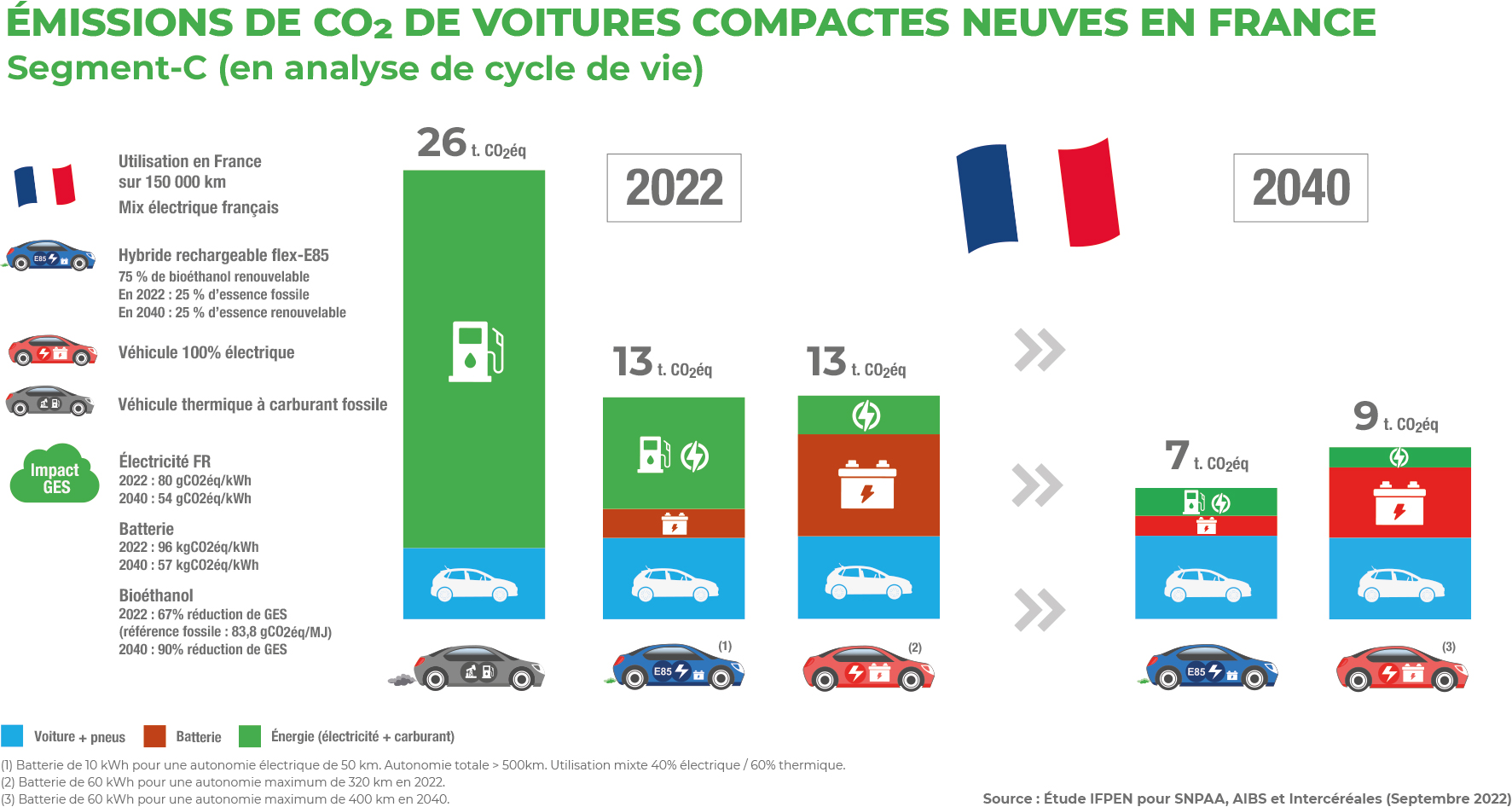LE BIOETHANOL,
FUEL OF THE FUTURE
Synergies with Future Energies
Bioethanol is part of a broader ecosystem of complementary renewable energies. Bioethanol fits perfectly into this dynamic by complementing and strengthening other sustainable solutions.
By harnessing the synergies between plant-based resources and new energy technologies, bioethanol is emerging as a key link in the energy transition. Accessible, efficient, and environmentally friendly, it helps build a more sustainable mobility model for future generations.

1. Electricity & bioethanol: a high-performance alliance
Plug-in hybrid vehicles (PHEVs) running on Superethanol-E85 combine the best of both worlds: electric power for short trips and bioethanol for long distances.
A 2022 IFPEN study showed that for a C-segment vehicle, an E85 PHEV driving 60% of its mileage in combustion mode is just as climate-friendly as an electric vehicle equipped with a 60 kWh battery when using the French electricity mix.
At the European level, the E85 PHEV is even better for the climate due to the higher carbon intensity of the European electricity mix.

2. Biogenic CO₂: a primary resource for sustainable aviation fuels (SAF)
Bioethanol production inherently generates biogenic CO₂. This easily capturable biogenic CO₂ will be one of the primary resources—together with hydrogen produced by water electrolysis—for the production of SAF.
3. Bioethanol and SAF co-products: a strategic complementarity
During the production of SAF, co-products similar to gasoline and diesel are necessarily generated. These gasoline-type co-products cannot operate properly on their own in a gasoline engine because they do not meet the required specifications (they have an octane rating of around 40, whereas the engine requires a minimum octane rating of 95).
By blending these co-products with at least 50% bioethanol, the resulting mixture reaches an octane rating above 95, enabling proper combustion in an engine.



